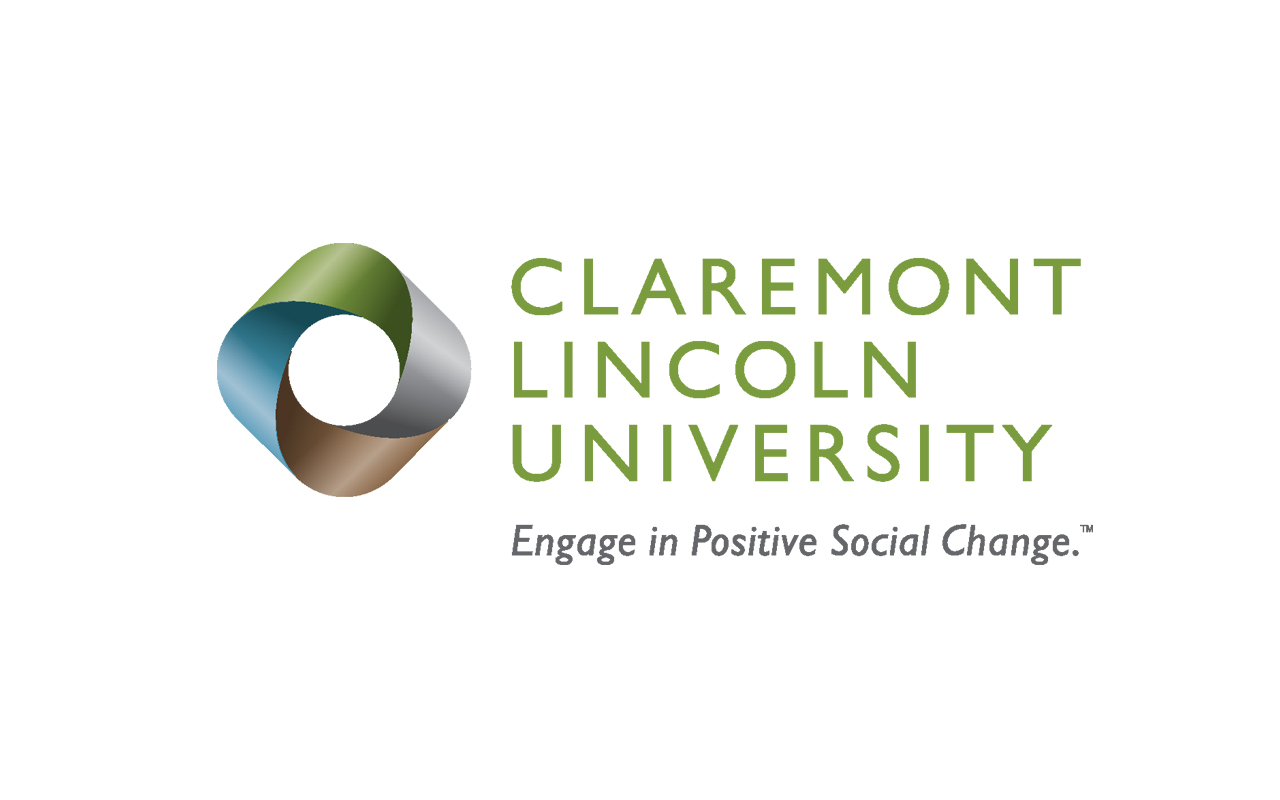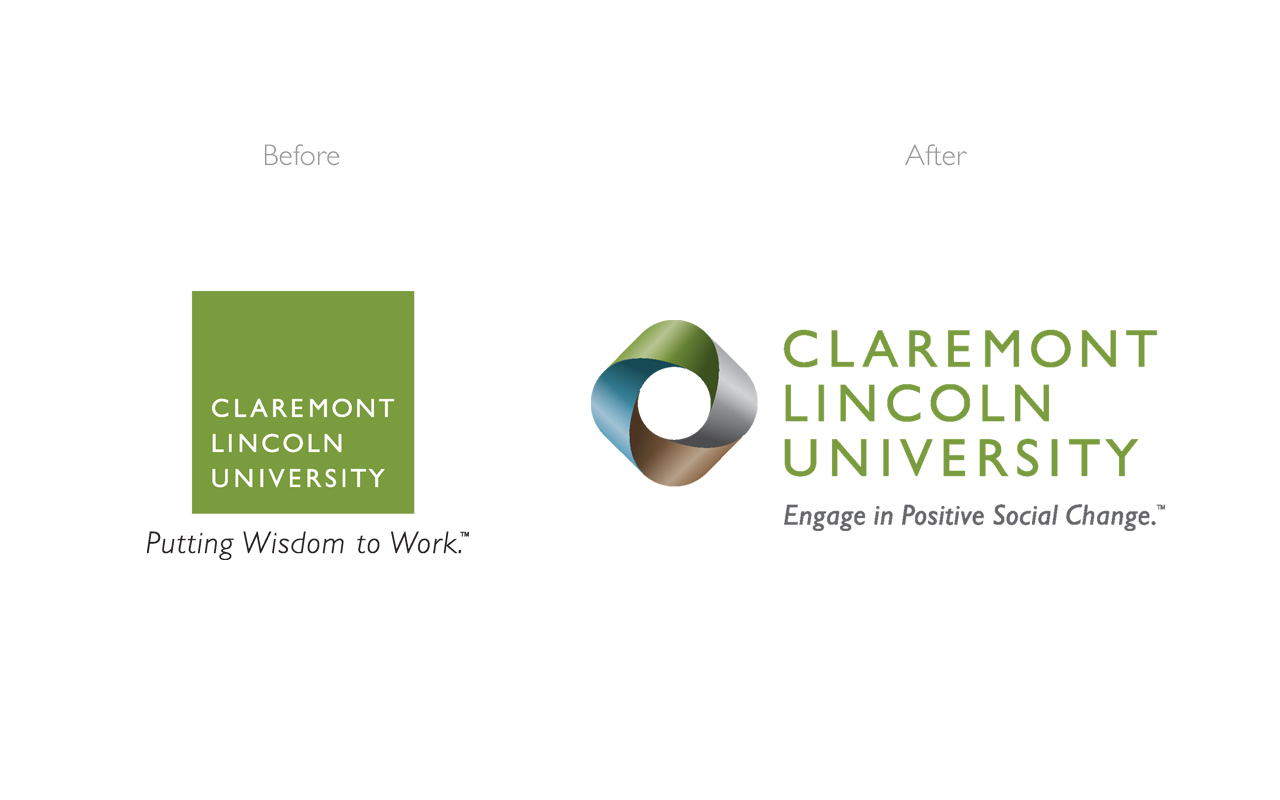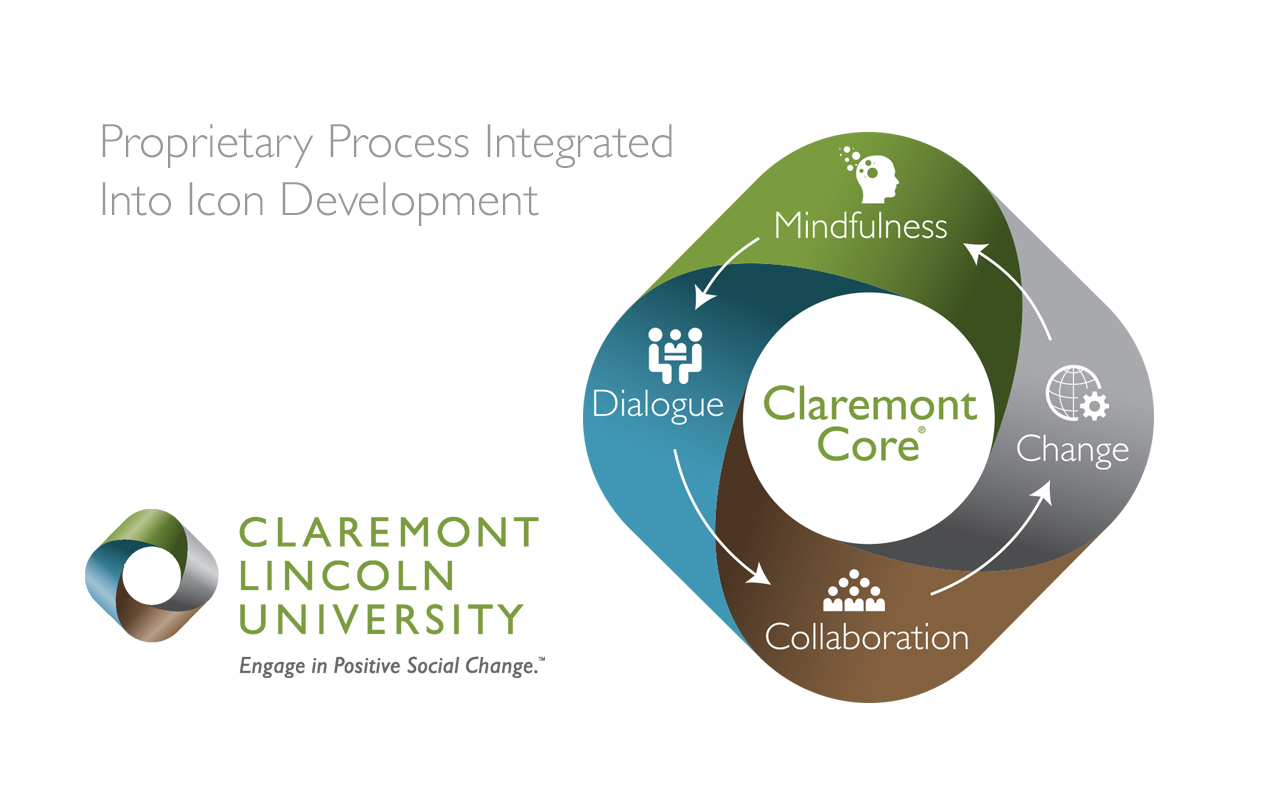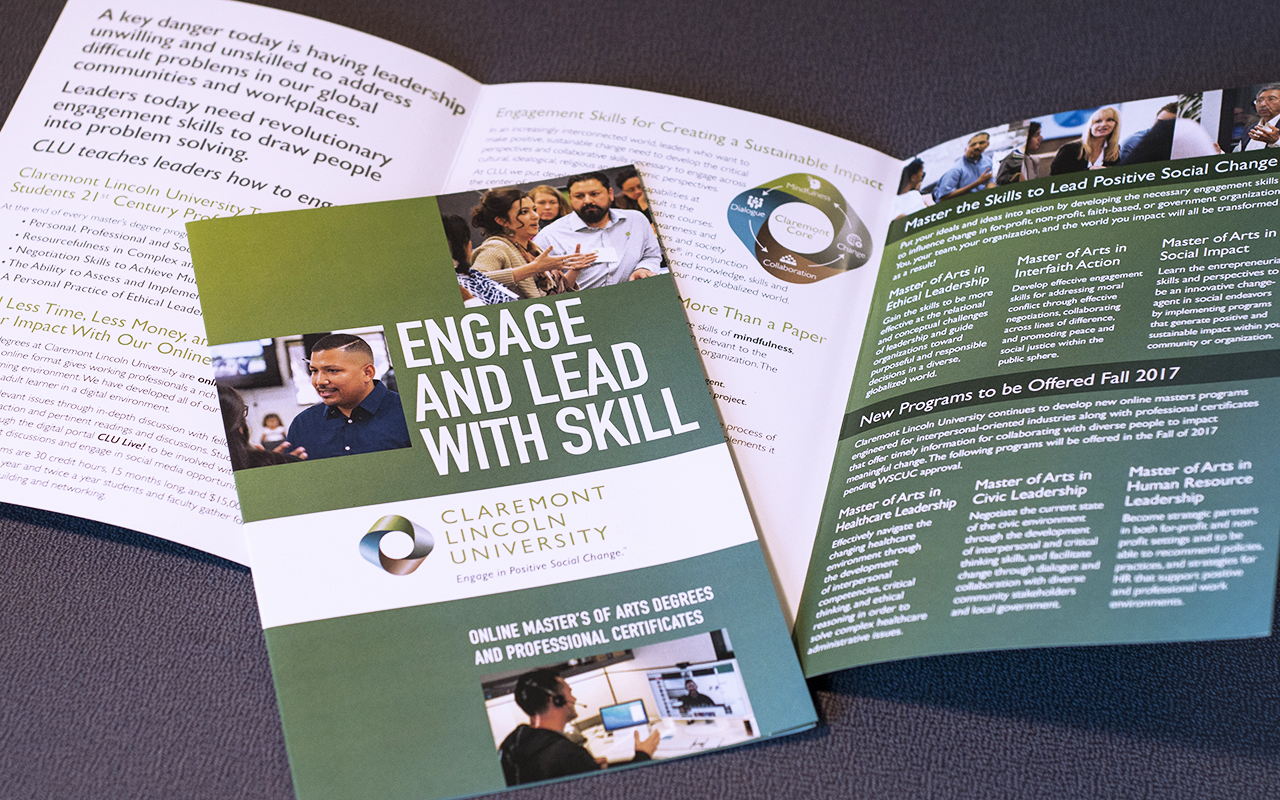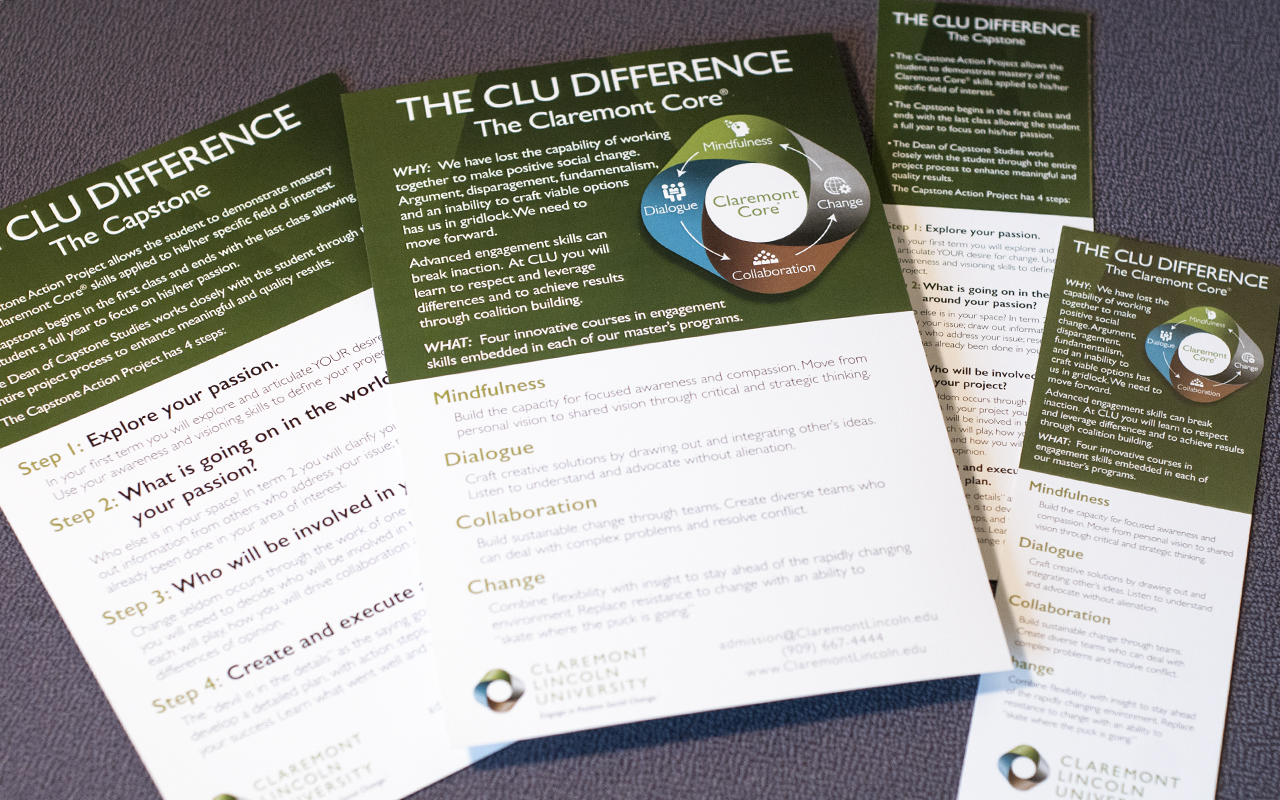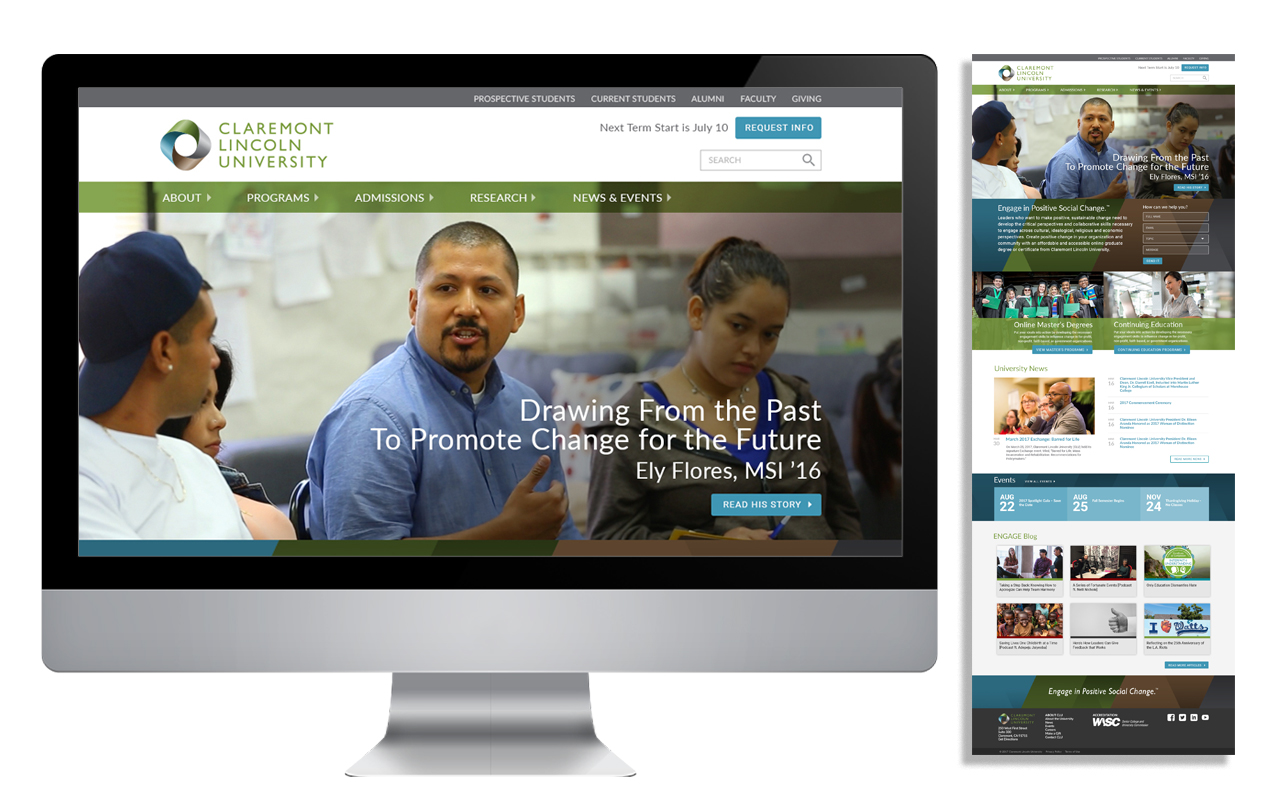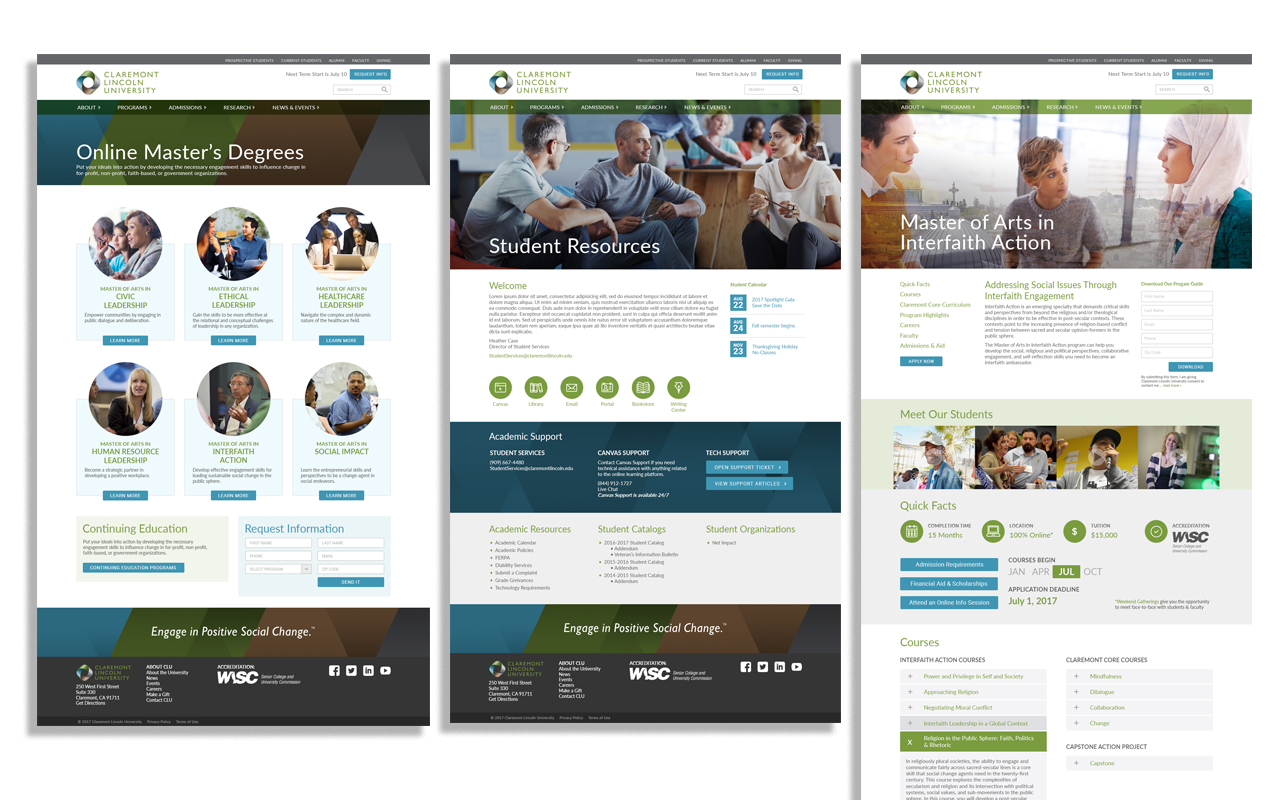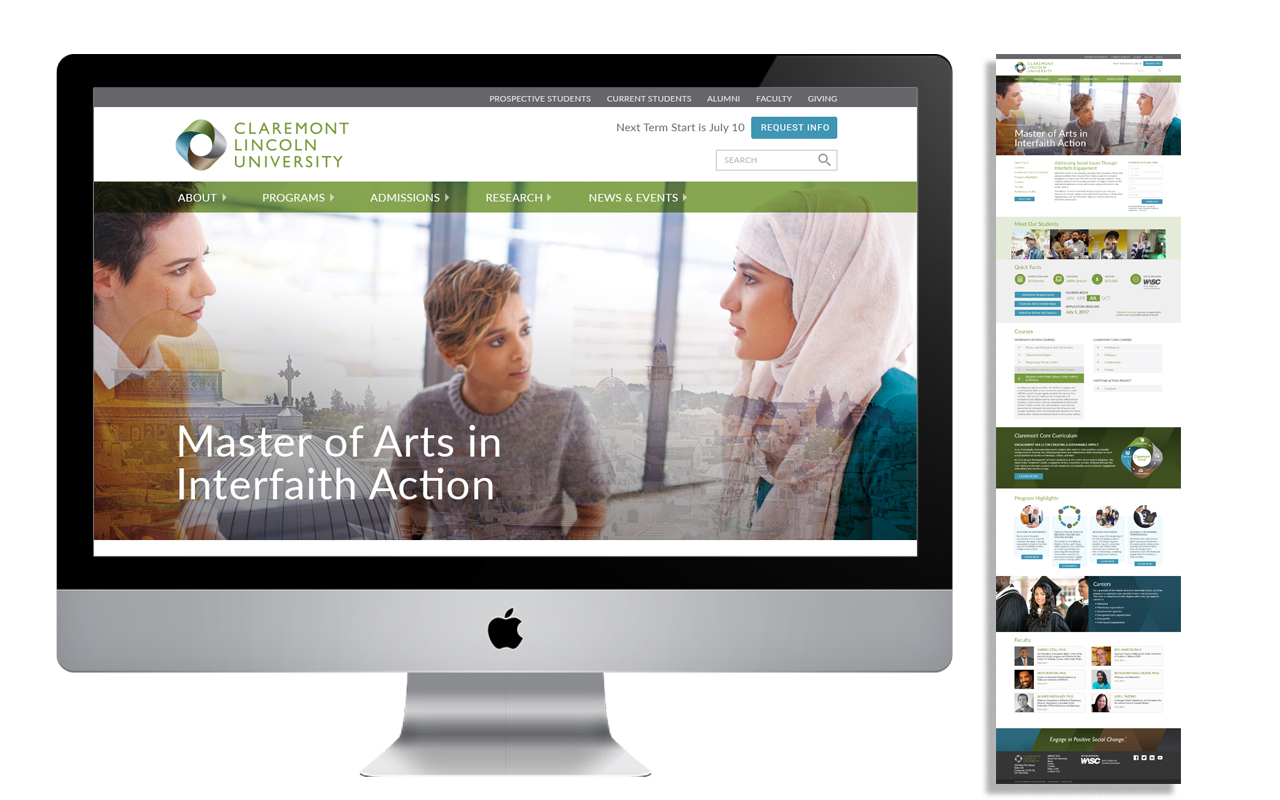Claremont Lincoln University
Situation
Claremont Lincoln University was initially developed in 2011 as a graduate interfaith studies school within a consortium of other religious studies schools at Claremont Graduate University. In order to become fully accredited, CLU became an independent institution in 2014. The university achieved initial WSCUC accreditation by early 2016 with three master’s degree programs all offered completely online. To further separate itself from the CGU system, a new identity system was needed along with creating a campaign to increase awareness to prospective students within the U.S.
Approach
The new identity was developed out of the university’s unique Claremont Core® curriculum—courses all M.A. students complete focused on leadership soft skills of mindfulness, dialogue, collaboration and change making. The icon and up-front positioning line, “Engage in Positive Social Change”, helped clarify the brand positioning and mission of the university.
Initial concepts of “New Solutions, New World” emphasized the diversity and globalization leaders are faced with in the workplace. Following campaign efforts focused more on “Engage and Lead with Skill” in order to broaden the appeal to graduate degree seeking adults in a wide variety of industries and roles. In 2017, program development expanded into vertical industries such as healthcare and human resource leadership.
Advertising media shifted from local and traditional efforts to a primarily digital media focus with Facebook, LinkedIn, and search marketing on Google and Bing. There was also a shift away from paid lead aggregator sites such as GradSchools.com and the like. A revamped website was built and social media activity increased with an emphasis on original thought-leadership content in order to increase organic leads and reduce the reliance of paid advertising.
Achievements
The university experienced year over year increases in organic traffic and lead generation to the admissions funnel, while program and recruitment processes continued to develop. Leads generated in 2017 stabilized to a 50/50 ratio of paid to organic leads, down from 80/20 in prior years.



